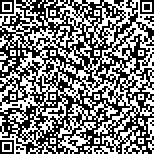本文已被:浏览 34次 下载 25次
Received:March 05, 2025 Published Online:June 20, 2025
Received:March 05, 2025 Published Online:June 20, 2025
中文摘要: 目的 探讨布比卡因脂质体和罗哌卡因行单次髋关节囊周神经(PENG)与股外侧皮神经(LFCN)联合阻滞在老年全髋关节置换术(THA)患者术后运动保留式镇痛中的差异。方法 采用前瞻性随机对照研究设计,纳入 2024 年 6 月至 8 月于广东省第二中医院行外侧入路 THA 的 60 例老年患者(ASA Ⅱ~Ⅲ级,年龄 60~80岁),随机分为观察组(n=30)与对照组(n=30)。两组均在腰硬联合麻醉前进行PENG+LFCN阻滞,观察组、对照组神经阻滞药物分别为布比卡因脂质体和盐酸罗哌卡因。观察术后12、24、36、48、60和72 h静息及动态视觉模拟评分(VAS);记录首次补救镇痛时间、72 h内舒芬太尼累积用量,并评估术后股四头肌肌力变化及恶心呕吐(PONV)、谵妄、肺部感染等不良事件发生情况。结果 术后24 h内两组患者静息VAS及动态VAS差异无统计学意义(P>0.05)。与对照组比较,观察组术后36~60 h静息VAS显著降低[48 h:2.0(2.0,2.2)分 vs 3.0(3.0,4.0)分,Z=6.045,P<0.01],动态VAS降低更显著[48 h:3.0(2.0,3.2)分 vs 4.0(4.0,5.0)分,Z=5.621,P<0.01]。与对照组比较,观察组首次补救镇痛时间推迟[(60.10±7.78)h vs(20.83±5.76)h,t=15.241,P<0.01],术后72 h内舒芬太尼用量降低[5.0(3.0,6.0)μg vs 10.0(5.8,13.2)μg,Z=3.183,P<0.01],且 PONV 发生率显著下降(6.67% vs33.33%,χ2=6.667,P<0.05)。两组患者术后24 h下床活动率均达100%,未发生股四头肌运动阻滞。结论 单次给予布比卡因脂质体行PENG联合LFCN阻滞,可为老年THA患者提供持续超60 h的有效镇痛,减少术后阿片类药物需求,降低PONV发生率。
Abstract:Objective To investigate the therapeutic difference between single?injection of bupivacaine liposome versus ropivacaine for combined pericapsular nerve group (PENG) and lateral femoral cutaneous nerve (LFCN) blocks in postoperative motor-sparing analgesia in elderly patients undergoing total hip arthroplasty (THA) . Methods A prospective randomized controlled study design was used to include 60 elderly patients (ASA grade Ⅱ?Ⅲ, aged 60?80years) who underwent lateral approach THA in Guangdong Second Traditional Chinese Medicine Hospital from June to August 2024, and were randomly divided into observation group (n=30) and control group (n=30) . PENG+LFCN block was performed in both groups before combined spinal ? epidural anesthesia, and bupivacaine liposome and ropivacaine hydrochloride were used as nerve block drugs in the observation group and the control group, respectively. Outcomes were observed including visual analog scale (VAS) scores during rest and movement (VASrest and VASmove) at 12, 24, 36, 48, 60 and 72 h postoperatively, time to first rescue analgesia, cumulative sufentanil consumption within 72 h, and the indexes were evaluated including quadriceps strength, and postoperative adverse events[postoperative nausea/vomiting (PONV) , delirium, pulmonary infection]. Results There was no significant difference in VASrest and VASmove between the two groups within 24 h after operation (P>0.05) . Compared with the control group, the VASrest was significantly reduced at 36?60 h after surgery[48 h:2.0 (2.0, 2.2) point vs 3.0 (3.0, 4.0) point, Z=6.045, P<0.01], and the VASmove decreased significantly[48 h:3.0 (2.0, 3.2) point vs 4.0 (4.0, 5.0) point, Z=5.621, P<0.01]in the observation group. Compared with the control group, the time of first rescue analgesia was delayed in the observation group[ (60.10±7.78) h vs (20.83±5.76) h, t=15.241, P<0.01], and the dose of sufentanil within 72 h after surgery was reduced[5.0 (3.0, 6.0) μg vs 10.0 (5.8, 13.2) μg, Z=3.183, P<0.01], and the incidence of PONV was significantly decreased (6.67% vs 33.33% , χ2=6.667, P<0.05) . All patients achieved ambulation by 24 h without quadriceps motor block. Conclusion A single administration of bupivacaine liposome for PENG combined with LFCN blocks can provide effective analgesia for more than 60 h in elderly THA patients, reduce postoperative opioid need, and reduce the incidence of PONV.
keywords: Bupivacaine liposome Ropivacaine Pericapsular nerve group block Lateral femoral cutaneous nerve block Total hip arthroplasty Postoperative analgesia
文章编号: 中图分类号:R614.4 文献标志码:A
基金项目:广东省医学会临床科研专项基金(2024H?B4011)
引用文本:
